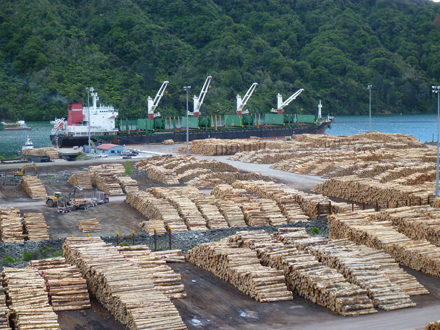 New Zealand structural log prices rose to the highest level for 25 years as local mills compete with the export market to secure supply for the domestic construction market amid strong demand from China. Source: Scoop Media
New Zealand structural log prices rose to the highest level for 25 years as local mills compete with the export market to secure supply for the domestic construction market amid strong demand from China. Source: Scoop Media
The average price for structural S1 logs increased to NZ$135 a tonne this month, from NZ$134 a tonne last month, and marking the highest level since 1993, according to AgriHQ’s monthly survey of exporters, forest owners and saw millers.
The average price for New Zealand A-grade export logs hit a four-year high of US$145/JAS from US$144/JAS last month, and US$132/JAS a year ago.
In New Zealand, sawmills are competing with the export market to source logs for local construction, at a time when demand in China has stepped up after Asia’s largest economy clamped down on the harvesting of its own forests and reduced tariffs on imported logs to meet demand in its local market.
“Export markets have remained an enticing avenue for log traders and there’s little to suggest this will change in the coming months,” AgriHQ analyst Reece Brick said in his report.
“China’s appetite for NZ logs means it’s still the price-setter for sales into other countries.”
Nearly all AgriHQ survey respondents reported steady or marginally firmer pricing across structural S1 logs in the latest market survey.
The winter weather had slowed harvesting in some areas but had come at an opportune time as some North Island mills were experiencing softer-than-expected local demand for structural timber due to caution across the New Zealand housing sector.
“Whether or not harvesting remains disrupted in the coming weeks is unlikely to make much difference to the medium-term direction of the domestic sales,” Mr Brick said.
“The pull of the export market is still pushing forest owners to try and negotiate contracts at or near the export market level. This is a situation that is very unlikely to change in the next few months.”
The volume of logs being taken from Chinese ports had slowed as a result of shorter working hours due to hot summer temperatures however, isn’t uncommon at this time of year and coincides with slower harvesting in New Zealand, which should keep the market in balance in coming months, Mr Brick said.
Forest products are New Zealand’s third-largest commodity export group behind dairy and meat products.





